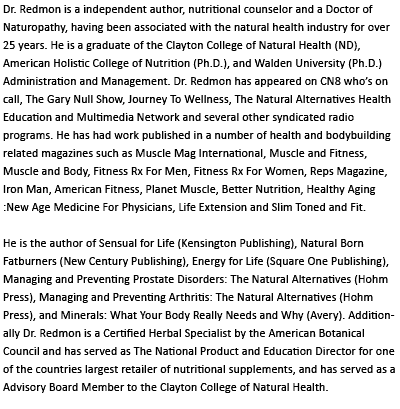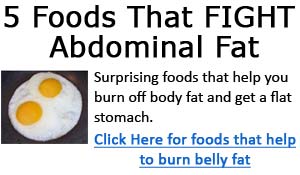Please Note: While deep tissue massage is a excellent way to maximize the physiological benefits mentioned above, more gentile light massage actually stimulates the release of oxytocin at a faster and greater rate. Also in reference to sexual orgasm and the release of oxytocin, the sexual foreplay before sexual intercourse actually stimulates a more profound release of this hormone. In fact researchers at Binghamton University studying the bio-chemical aspects of oxytocin release during foreplay found that its release is significantly enhanced with repeated sexual encounters with the same sexual partner. Hugging and touching stimulates production of this feel good anabolic hormone. In fact, a new study from the University of North Carolina found that individuals that have more affectionate contact have higher oxytocin levels than those who don’t.
Researchers also content that oxytocin release can be as effective as the hormone serotonin that is naturally released when you exercise. Known as a natural mood elevator,serotonin also called 5-hydroxytryptamine acts as both a chemical messenger that transmits nerve signals between nerve cells and clearly plays a major role as an anti-depressive compound. Negative changes in serotonin levels in the brain are associated with altering mood and the development of depression and muscle fatigue. Bottom line here, elevated oxytocin levels will keep you focused and your brain re-energized and you mentally prepared for your next workout.
Back To The Hypothalamus
As previously stated most of your bodies oxytocin production occurs in the hypothalamus, known as the master gland. The hypothalamus gland actually links the nervous system to the endocrine system. It maintains homeostasis, or in other words helps reset body systems to maintaining a sound functioning internal environment. Additionally, researchers at the Department of Pharmacology at the New York University School of Medicine found that oxytocin stimulates insulin and glucagon secretion, as well as increasing glucose production by its direct effect on increasing glucagon production. The activation of these hormones as a result of increased oxytocin production improved the anabolic parameters as cited below in subjects:
- Increased energy production.
- Accelerated muscle repair and recovery.
- Increased fat burning and overall metabolic activity.
- Decreased muscle wasting.
- Increased strength and lifting capacity.
- Improved and stabilized blood sugar levels. This is significant, as elevated blood sugar inhibits the release of growth hormone.
- Increased muscle utilization of fuel.
- Reduced cortisol production (the muscle wasting hormone).
- Improved blood pressure.
- Reduced and improved the body mechanisms that control stress.
Off The Chain Fat-Burning
While oxytocin isn’t a household named fat-burner, its themogenic capabilities are well documented. For example, researchers now know that oxytocin has insulin-like properties. Insulin as discussed earlier is one of your most anabolic hormones, and has a positive affect on muscle-protein synthesis. Oxytocin also is intimately involved with the regulation and activation of the pyruvate dehydrogenase (PDH) complex. The main purpose of this physiological process is to make sure the metabolic pathways of glycolysis, (glucose being converted to latic acid) gluconeogenesis (glucose being converted to glucogen) and fatty acids synthesis stay connected and work together smoothly and efficiently!
Why are the above processes important to your body’s fat-burning activities? Well for starters, glycolysis is the first metabolic process that initiates most of the activity concerning carbohydrate metabolism. Glycolysis also serves as the foundation of both aerobic (with oxygen) and anaerobic (without oxygen) systems that generate cellular energy. Gluconeogenesis is a biological process in which the body generates or produces glucose from non-sugar components and amino acids like alanine and glutamine. While most of the body’s gluconeogenic activities occur in the liver, this process shifts into high gear during periods of intense workouts and is extremely endergonic (an energy consuming reaction). The third equation within the PDH complex is accelerated fatty acid synthesis. As you are undoubtedly aware of, fatty acids are stored for future use by cells for energy. Increased fatty acid synthesis will result in less storage of fat as the body uses it more efficiently as a fuel or for metabolic energy and or fat-burning.
Fat-Burning While At Rest
In addition to the above, a area or mechanism of fat-burning that oxytocin is involved with, are with substances known as uncoupling proteins ( UCP-2). These proteins rapidly appear in the mitochondria, the powerhouses of the cell that regulate metabolism and fat metabolism. Recently researchers at Harvard University established a clear link between reduced uncoupling protein (UCP-2) activity and obesity. Having a direct impact on the bodies resting metabolic rate (how well you burn fat at rest) the above researchers reported that UCP-2 helps increase the body’s production of its main energy molecule ATP (adenosine-tri- phosphate). The more ATP your cells have the work with determines how efficiently your body stimulates fatty acid oxidation (the use of fat stores as fuel). The correlation above and oxytocin’s impact on UCP’s was recently confirmed by researchers at the Department of Physiology at the University of Geneva and at the Department of Human Biology at the University of Maastricht , the Netherlands. These researchers presented conclusive evidence that uncoupling proteins in skeletal muscles and brown adipose tissue regulate thermo-genesis (fat-burning), as well as how the body uses lipids (fats) as a fuel substrate.
Not Just A Female Hormone
One of the problems and probable reasons that this hormone’s anabolic capabilities is overlooked and isn’t well- publicized and or understood is that it is commonly referred to as the cuddling hormone. It is more closely associated with women and its substantial release during birth and when they nurse. Women actually produce more oxytocin then men, doing so when they talk , lactate , kiss and or are mentally and physically aroused sexually. Hence its tag as the touch hormone. While oxytocin’s action is dependent on its interaction with the brain, the female hormone estrogen amplifies and intensifies its action. Conversely, males produce oxytocin, just not at the same level or intensity as women. However, its anabolic capabilities have a definitive impact on the males anabolic communication system. Hence here its reference as a endocrine interactive hormone, meaning it augments actions of the entire anabolic hormonal system, as it is manufactured in the testes, the adrenals, the pituitary, the pineal gland, and the prostate gland.
Last Words
The key difference here between oxytocin and other hormones ( testosterone, thyroid, and steroids, etc) is the fact the minute you start flooding the system with exogenous ( outside sources) of these hormones the body begins to shut down or turn off your natural production of them. However, the more oxytocin the body manufactures and stimulates, the functional capability of the entire hormonal system is heightened. Simply put, the hormone oxytocin regulates and plays a key role maintaining the bio-chemical anabolic hormone anomalies that occur throughout the body, versus one particular area of the body. This capability is only unique to the hormone oxytocin. Furthermore, oxytocin is cortisol’s (the muscle wasting hormone) worst nightmare, inhibiting its production. The other unique aspect here is centered on you and some basic human instincts and not on your intake of protein and or a supplement. You and your actions will literally decide how well this anabolic hormone will work for you!


